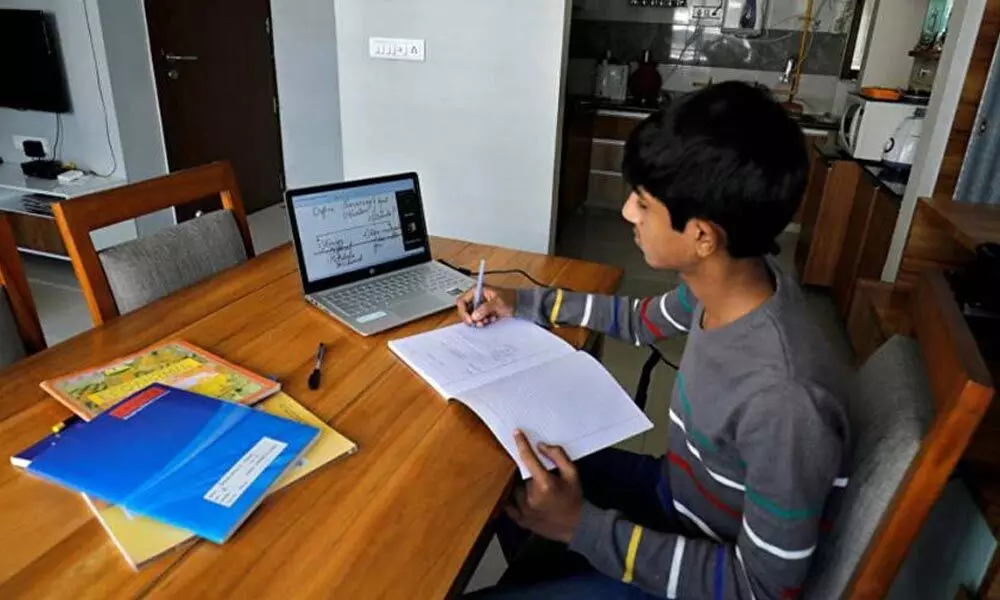Online mode of education faces many hurdles, reveals study

Online mode of education faces many hurdles, reveals study
- AIU, OPJGU report stresses on showing greater sensitivity on digital divide
- Digital divide a hurdle for a transition to the online mode of education
Hyderabad: A Covid-19 Response Took Kit for Indian Higher Education Institutions by the Association of Indian Universities (AIU) and OP Jindal Global University (OPJGU) exposes several gaps in the current state of transition to the online mode of education.
It may be mentioned here that the report comes close on the heels of a 15-year-old schoolgirl committing suicide in the Chamarajnagar of Karnataka reportedly for not able to afford a smartphone to attend online classes.
The report stresses on the greater sensitivity among the policymakers like Education departments, universities and colleges making policies and rolling out online education as an alternate model during the current COVID crisis from the point of the digital divide.
Analysing the Student Enrolment Landscape Analysis (SELA) and the Gross Enrollment Ratio (GER) in the Indian Higher Education Landscape, it said that the current GER in the IHEL stands at 26.3 per cent.
Of this, 10.62 per cent are enrollments in the Distance Education Model (DEM).
The AIU and OPJGU identify that the majority of students base affected are enrollments in the non-distance format of education. Particularly, 79.8 per cent are undergraduate students. Besides, of the total UGS, the majority of them are enrolled in Arts, Humanities and Social Sciences (35.9 per cent), Science (16.5 per cent). Followed by 13.5 per cent are from engineering and technology and 14.1 per cent enrolled in the commerce courses. Only less than 0.5 per cent are the students of research degrees like PhD.
Based on this, it asked the policy planners, universities and colleges to make critical focus in planning academic continuity. Further, more than 50 per cent of the total students enrolled under the UGS is from "scheduled caste/tribe, OBC and minority communities." In turn, this makes a large number of students represented by these communities may potentially be more vulnerable to additional disadvantages in continuing their education during these pressing times.
That apart, as nearly 394 universities and 60.53 per cent of colleges are located in rural areas makes it further difficult to switch over to the online mode due to insufficient technology infrastructure. This makes it not easy for every higher education landscape to operate synchronous online classes. Higher education also faces pedagogical restrictions and it may not be possible to implement effectively through an online format. It needs innovation in teaching and learning methodologies, as well as, investment in technology-based platforms, it stressed.
The report cautioned that higher concentration of students and faculties on campuses. The residential campuses and non-residential students commuting every day might be a potential risk factor, as the spread of the virus is very high.
For example, the top 8 states for the highest number of colleges are Uttar Pradesh, Karnataka, Maharashtra, Rajasthan, Haryana, Tamil Nadu, Madhya Pradesh and Gujarat.
Of these, "Uttar Pradesh, Karnataka, Maharashtra, Tamil Nadu, Gujarat are also among the states with the most number of COVID-19 cases as on date."
Hence, it stresses to factor before planning to reopen the campuses physically the geographical areas, where the HEIs are located and are prone to high risk of transmission. Course classification ad customization, student analysis, Delivery Methodology Identification (DMI) and content customization are among the other areas that the report has made its findings.



















